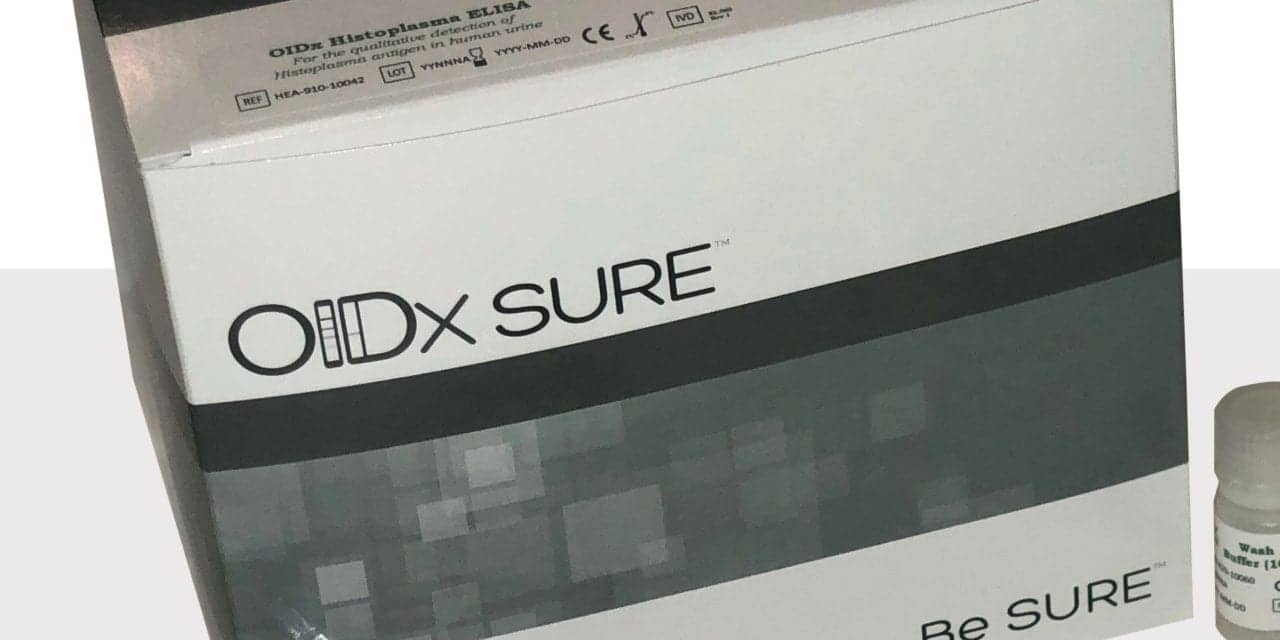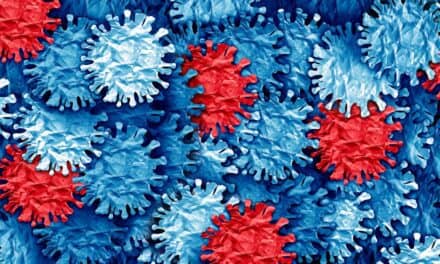Optimum Imaging Diagnostics, Scarborough, Me, has recently released a new urinary antigen enzyme immunoassay for Histoplasma capsulatum, a thermally dimorphic fungus that is the cause of the systemic disease histoplasmosis.1 Histoplasma capsulatum is a global concern and is endemic to parts of Africa, Latin America, and the Ohio and Mississippi River valleys of the United States.
Histoplasmosis is most common among patients who are positive for HIV or otherwise have a compromised immune system. It is estimated that the number of HIV patients with disseminated histoplasmosis totals 100,000 worldwide, leading to 80,000 deaths, partly due to lack of diagnosis.2 Histoplasmosis is especially a problem in regions of the world where antiretroviral therapy prevents HIV-infected people from reaching the stage at which they are especially vulnerable to histoplasmosis and other opportunistic infections.3
It is beginning to be recognized that histoplasmosis is more widespread than initially thought and that the current understanding of its presence is incomplete. It has therefore been recommended that testing should be performed on patients with immune suppression, if physicians are considering disseminated histoplasmosis, regardless of geographic area or travel history.4
The Optimum Imaging Diagnostics assay utilizes a unique rabbit monoclonal antibody directed against a distinct antigenic determinant on the intact galactomannan molecule. The company’s Histoplasma capsulatum urinary antigen enzyme immunoassay provides high sensitivity and specificity when compared to current in-house developed proprietary tests. The assay is offered in an easy-to-use format, with breakaway wells allowing for small-volume testing, and yields results in 90 minutes.
Early diagnosis and treatment are essential to aid in reducing the high mortality rate. Yet diagnosis currently requires samples to be evaluated by culture, which can take weeks, or sent to reference laboratories, which is expensive and can take 2 to 3 days for a result.
For further information, visit Optimum Imaging Diagnostics.
References
1. Darling S. A protozoan general infection producing pseudotubercules in the lungs and focal necrosis in the liver, spleen, and lymph nodes. JAMA. 1906;46:1283–1285.
2. Open letter on disseminated histoplasmosis and AIDS, to key stake holders tackling AIDS epidemic [online]. Geneva: Global Action Fund for Fungal Infections, 2016. Available at: www.gaffi.org/open-letter-on-disseminated-histoplasmosis-and-aids-to-key-stakeholders-tackling-the-aids-epidemic. Accessed January 28, 2019.
3. Wheat J. Histoplasmosis: recognition and treatment. Clin Infect Dis. 1994;19(Suppl 1):S19–S27.
4. Bahr NC, Antinori S, Wheat LJ, Sarosi GA. Histoplasmosis infections worldwide: thinking outside of the Ohio river valley. Curr Trop Med Rep. 2015;2(2):70–80; doi: 10.1007/s40475-015-0044-0.
Featured image: The urinary antigen enzyme immunoassay for Histoplasma capsulatum from Optimum Imaging Diagnostics.





